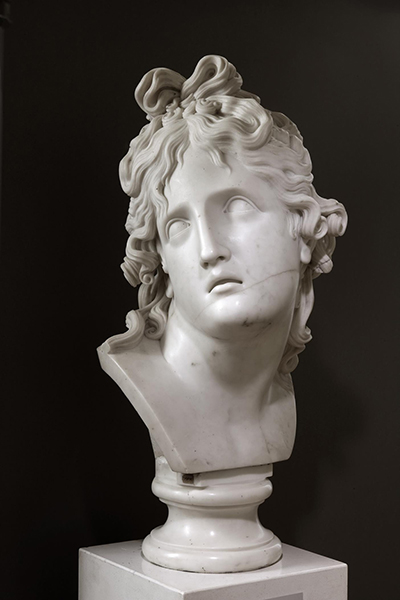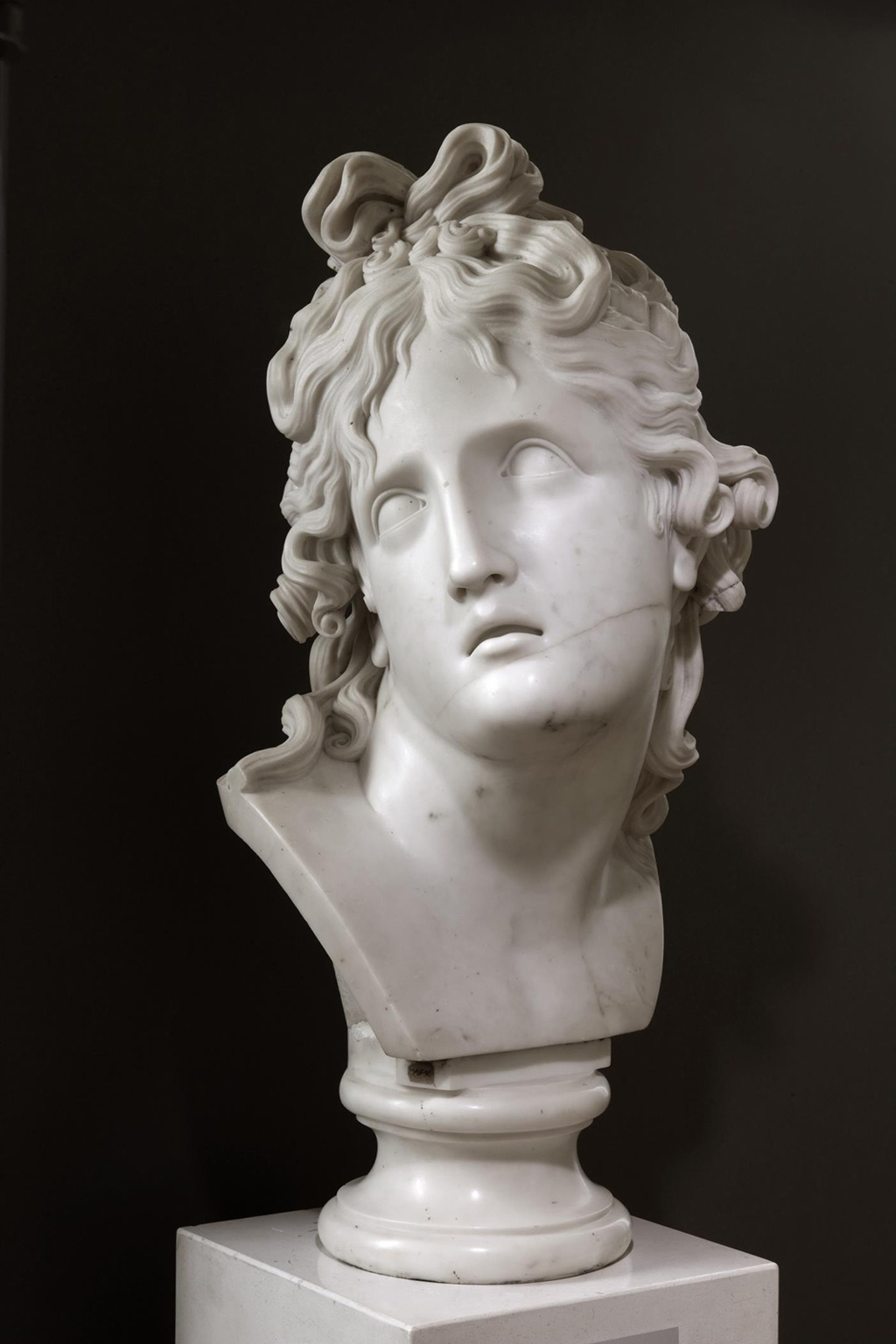This memorable bust was produced by Antonio Canova in 1789, at which point he would have been around thirty two years old. The statue was intended to be a part of a larger project, namely the tomb of Pope Clement XIII.
It is a sign of the prominence of Canova during his own lifetime that he was afforded such prestigious commissions as this. It was the Roman senator Prince Abbondio Rezzonico, along with some of his family members, who chose Canova for the overall tomb project. The bust itself found here is deliberately constructed in a size larger than would have been in real life in order to make sure that it worked effectively within the overall display. Canova is believed to have reworked elements of the tomb after becoming disatisfied with nature variations that occurred within the marble from some of the original work. He would never be able to sign off something that was not perfect in his eyes, and this level of integrity helped him to forge such a solid reputation. Sculpture is an art form which relies on the beauty of natural stone and this sometimes has downsides which can be entirely unforeseen, as in this example. The item can be found at the Hermitage Museum after being purchased from a Russian collector by the name of Rumyantsev.
Canova remains considered one of the most famous and respected Italian sculptors of all time. The Venetian ranks alongside the likes of Donatello and Bernini in delivering some breathtaking pieces which remain much loved, even though the traditional art form does not enjoy quite the following that it once did. Today we find all manner of new styles of sculpture which are a long way from the academically taught approaches of previous centuries, and many still prefer the original methods and ideas. You will find the exhibitions of the masters of the past still retain huge interest and can be sold without any need for over-promotion - the work simply sells itself and the opportunity to see several items from a single career together at the same time is a rare possibility which many will be excited by.
The Hermitage Museum in St Petersburg, Russia, continues to hold one of the finest collections of European paintings and sculpture anywhere in the world. A version of Cupid and Psyche as well as Orpheus and The Three Graces can all be found here and one of the advantages of sculptors is that they often oversaw several versions of their best designs, meaning different institutions can hold items from their career across different countries. This has the added benefit to the artist of keeping his work in front of as many eyes as possible, and the success or prominence of even the best artists can be led by the regions in which their work is displayed. You will see that with Joaquin Sorolla, for example, as most of his work resides in Spain or the US, meaning many from other counties are entirely unaware of his career, as good as it undoubtably was. Canova was significant enough to make this less of an issue, and remains regarded as one of the most important late 18th, early 19th century artists, in any artistic discipline.





